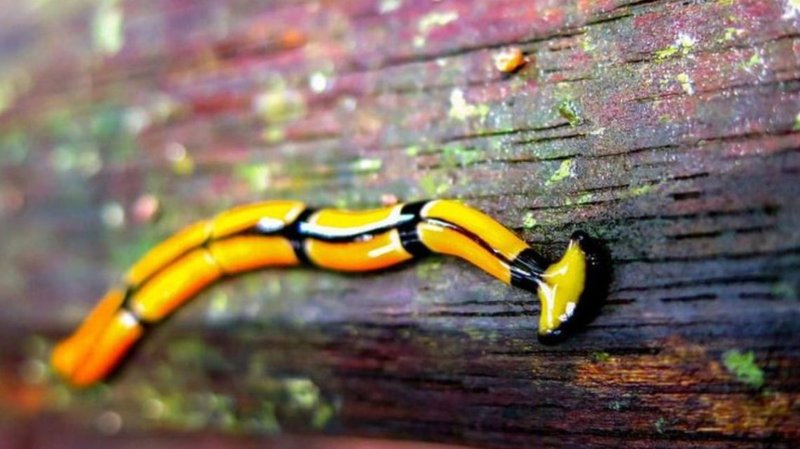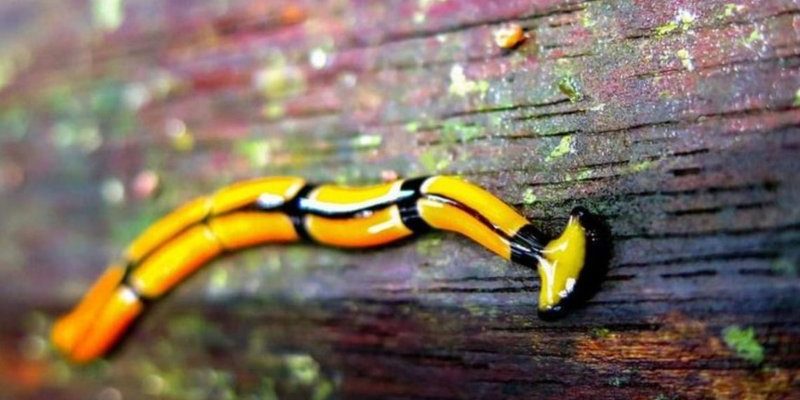
The habitat preferences of the Malayan hammerhead worm are just as intriguing as its appearance. If you’re curious about where these worms thrive and what makes their homes special, you’re in for a treat. Let’s dive into the rich environments that these worms call home, and explore how their habitat influences their behavior and survival.
Understanding the Malayan Hammerhead Worm
The Malayan hammerhead worm, scientifically known as *Bipalium kewense*, is part of the land planarian family. They are native to Southeast Asia but have gained attention in other parts of the world due to their striking appearance and behavior. Unlike typical worms, these creatures have a flattened body and a distinct arrowhead or hammer-shaped head that sets them apart.
These worms are carnivorous, often preying on other small invertebrates, which makes them an interesting part of the ecosystem. Their body can grow up to 30 centimeters long, and they exhibit a range of colors, from dark brown to vibrant red or even blue. Understanding their habitat preferences helps us appreciate their role in their natural environments.
Natural Habitats of the Malayan Hammerhead Worm
You might be wondering, where can you actually find these quirky worms? The Malayan hammerhead worm typically prefers moist environments with plenty of organic matter. They thrive in areas with rich plant life, such as rainforests or gardens where the soil is fertile and damp. Here are a few common habitats where you can spot them:
- Tropical Rainforests: These dense forests provide the warm and humid conditions that hammerhead worms love.
- Human-Grown Gardens: Many gardeners may not realize these worms are around, but they often find homes in mulched areas or compost heaps.
- Decaying Leaf Litter: These worms enjoy the organic matter in leaf litter, which also serves as a hunting ground for their prey.
In essence, the Malayan hammerhead worm seeks out places that not only offer shelter but also a steady supply of food. This connection between their habitat and diet is crucial for their survival.
Moisture Levels and Habitat Selection
One of the most critical aspects of the habitat preference of the Malayan hammerhead worm is moisture. These worms require a humid environment to maintain their health and functionality. Without adequate moisture, they can dry out quickly, leading to a decline in their activity levels.
You might have seen them slithering across damp soil after a rainy day or lurking beneath the surface in the cool shade. The moisture helps them breathe through their skin, which is essential for their survival. They often prefer shady spots, where the sun doesn’t dry out their environment.
In regions where it gets too dry, you may find fewer hammerhead worms. They simply won’t thrive in arid climates. Instead, they depend on consistent humidity found in tropical regions or places that have regular rainfall.
Temperature Preferences
Aside from moisture, temperature also plays a significant role in the habitat preferences of the Malayan hammerhead worm. They tend to favor warm climates, with optimal temperatures typically ranging from 20°C to 30°C (68°F to 86°F). This range feels like a sauna to them, making it perfect for their lifestyle.
When temperatures drop, these worms may become less active. In cooler conditions, they can burrow deeper into the soil or seek out warmer microhabitats, like compost piles, where temperatures are more favorable.
This temperature sensitivity means that if you’re in a colder climate, spotting a Malayan hammerhead worm becomes quite the challenge. However, during warmer months, their numbers can increase significantly, especially in areas that maintain high humidity.
Impact of Habitat on Behavior
The habitat preferences of the Malayan hammerhead worm not only affect where they live but also influence their behavior. For instance, in rich, moist environments, you can observe them actively hunting for prey like earthworms and slugs. Their hunting techniques involve releasing a sticky mucus to capture their food, an adaptation that works well in moist conditions.
In contrast, when they find themselves in less favorable habitats, like dry or overly exposed areas, their movement slows down. The stress of unfavorable conditions can lead them to seek refuge in shaded or damp areas of the soil.
You might notice that these worms are more vibrant and active after a rainy spell. This behavior ties back to their habitat preferences, showcasing how deeply connected they are to the environmental conditions around them.
Threats to Their Habitat
While the Malayan hammerhead worm is adaptable, it faces threats that could destabilize its habitat. Urban development is a significant concern, as freshwater habitats are often drained to make way for buildings. This change can reduce available moisture and organic matter, making it hard for these worms to thrive.
Additionally, the use of pesticides in agriculture can harm their populations. These chemicals can diminish their food sources and even impact their health directly. As a result, preserving their natural habitats is crucial for ensuring their survival.
The more we understand their habitat needs, the better we can contribute to their conservation. Protecting the rainforests and gardens helps maintain the balance of ecosystems where species like the Malayan hammerhead worm play a vital role.
How Humans Can Support Their Habitats
Supporting the habitat of the Malayan hammerhead worm can start at home, especially if you have a garden. Here are a few simple steps you can take:
- Limit Pesticide Use: Opt for organic gardening methods to promote a healthier environment for beneficial worms.
- Create a Compost Heap: This not only helps recycle waste but also provides an excellent habitat for worms.
- Plant Native Vegetation: Native plants can attract a range of insects and maintain the soil moisture levels that these worms love.
By taking small but meaningful actions, anyone can contribute to preserving the habitats of these unique creatures. This not only helps the hammerhead worm but supports biodiversity and the environment as a whole.
As we explore these fascinating creatures and their habitat preferences, it’s clear that every little bit counts.
In conclusion, the habitat preferences of the Malayan hammerhead worm reveal much about its life cycle, feeding habits, and behavioral patterns. Understanding these preferences helps us appreciate not only this unique worm but also the delicate balance of ecosystems they inhabit. By engaging in sustainable practices, we can help ensure that these captivating creatures continue to thrive in the wild.

